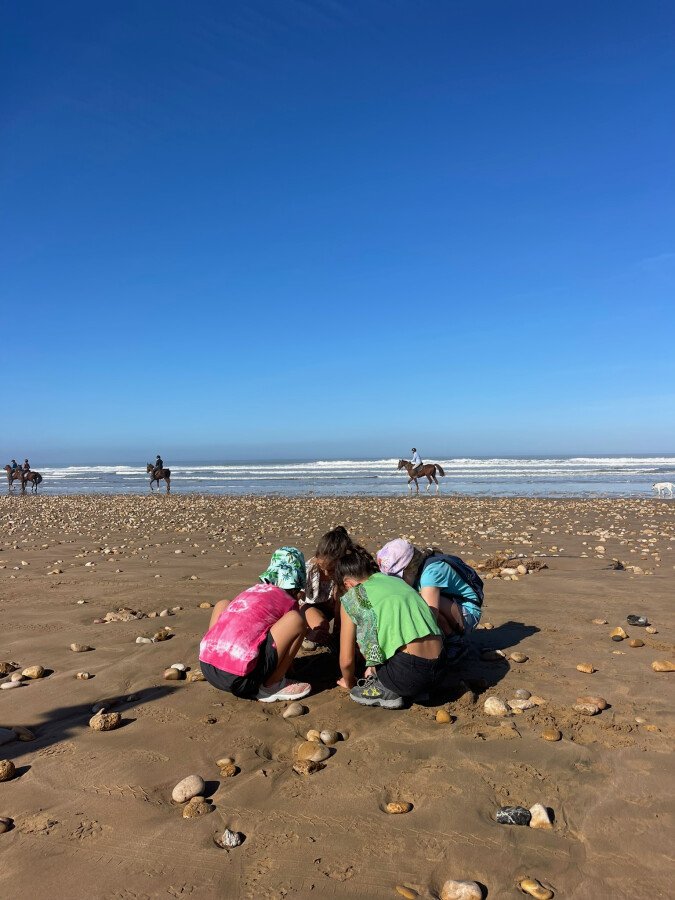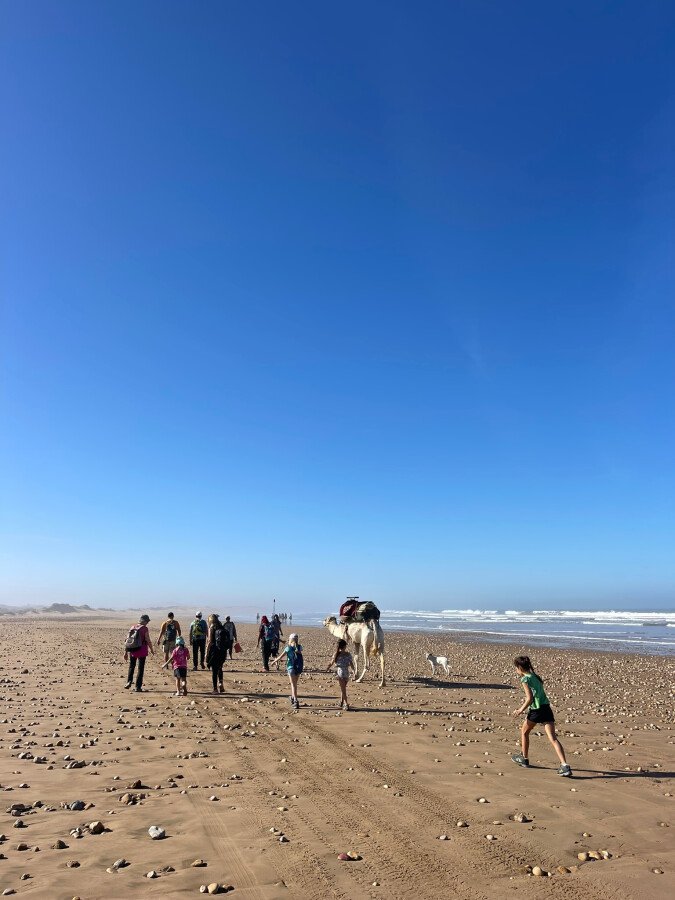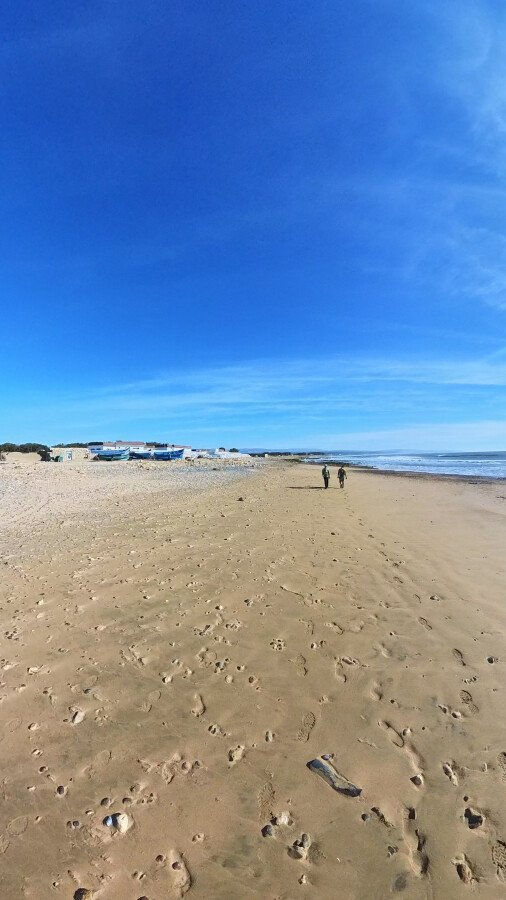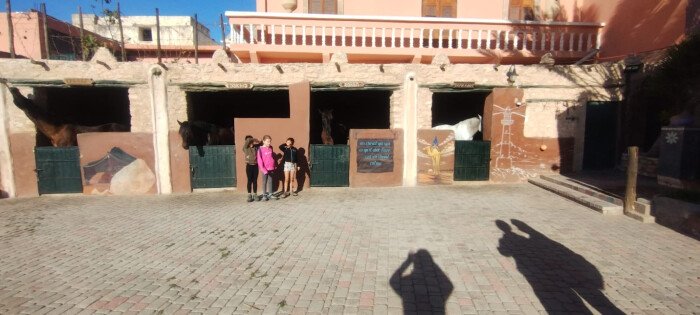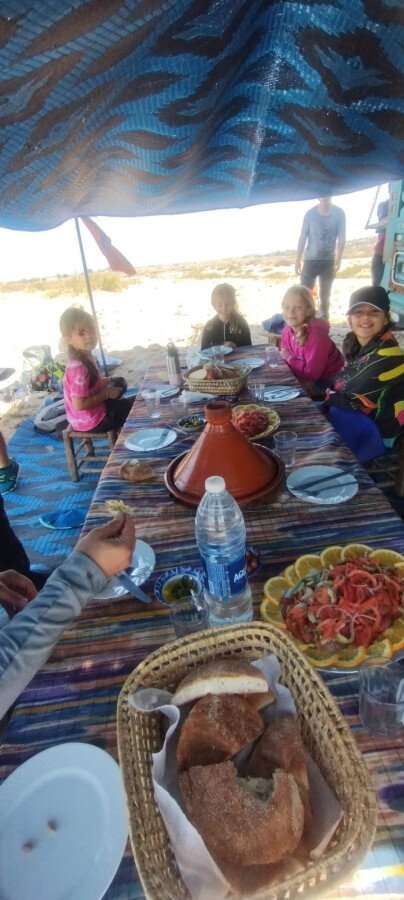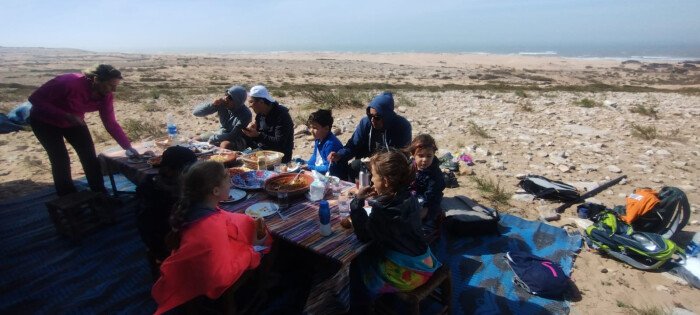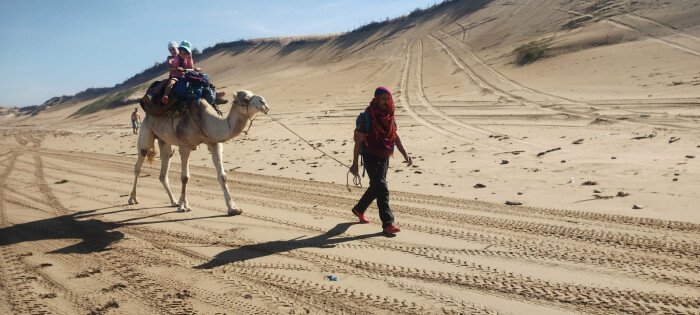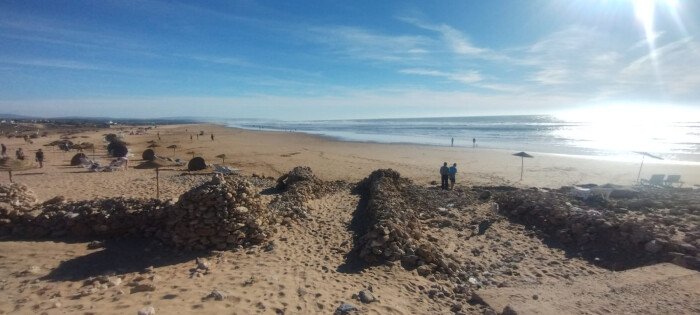One of the most exciting experiences to have in Morocco is undoubtedly trekking: from beaches to deserts, hills to high mountains, the possibilities are endless. In this article, we’ve gathered some practical tips to help you prepare for a trekking adventure in Morocco.
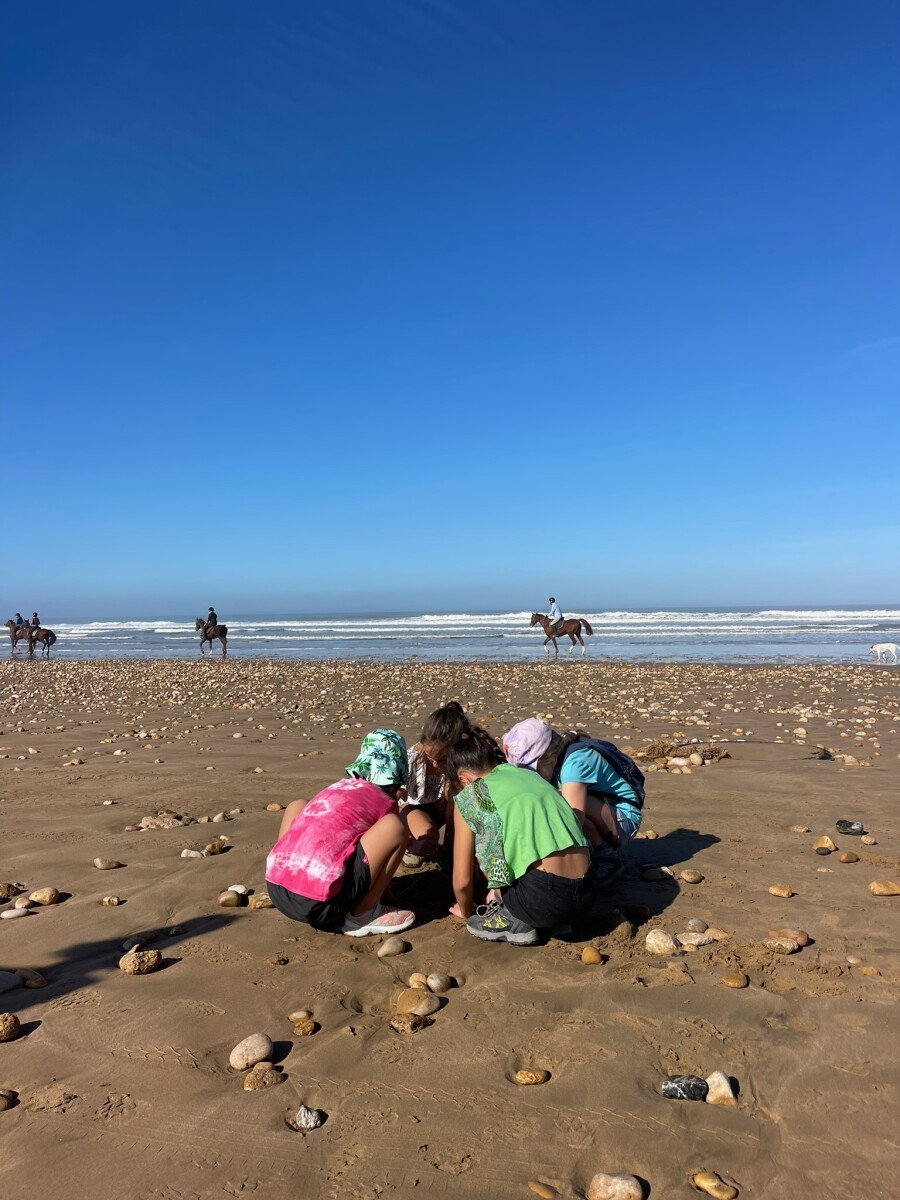
Trekking in Morocco: What to Wear
As always with trekking, dressing in layers is highly recommended. Morocco is a country with diverse climates: from the mild weather of the beaches (which can be quite humid with significant nighttime temperature drops) to the dry desert air, and up to the Toubkal Mountains, which at over 4,000 meters is the highest peak in Morocco and all of North Africa. The Toubkal can be climbed year-round (with a guide, which is mandatory), but if you’re trekking in winter, crampons and ice axes are essential. These can be rented or purchased in Imlil, the base camp for the ascent.
Apart from this extreme case, some general trekking clothing tips also apply in Morocco: opt for technical fabrics that are breathable and quick-drying, a waterproof jacket to protect against wind and rain, a lightweight down jacket for chilly nights, bandanas to shield yourself from strong winds, and, of course, all the essentials for sun protection (hats, sunglasses, and sunscreen).
For shoes, choose comfortable ones with good ankle support and non-slip soles (like Vibram), especially for rocky terrain. If you’re planning to trek in the desert, gaiters can be useful to keep sand out of your shoes (and any other accessory to prevent sand from getting between your clothes and skin).
Good to know: Decathlon stores are available in Morocco (with an online shopping option), so you can easily get what you need on-site if necessary.
Trekking with Moroccan Bivouac: How Does It Work?
Camping independently and outside designated campsites is prohibited by Moroccan law. To experience bivouacking, you must apply for formal authorization at least two weeks in advance. The easiest way is to rely on local agencies. At the Ranch de Diabat, we organize bivouacs with all necessary services (including bathrooms). If you’d like to learn more, we’ve written an article dedicated to Moroccan Bivouacs. Once we receive the travelers’ documents, we handle all the formalities with the relevant authorities.
You can also stay in more luxurious fixed bivouacs, such as in the rocky Agafay desert near Marrakech or in the famous Sahara deserts (Zagora and Merzouga), where you can immerse yourself completely in the desert experience.
What Are the Bathrooms Like in Morocco?
Overall, hygiene and the quality of bathrooms are steadily improving, especially in urbanized and tourist areas. For example, there are more and more service stations with bathrooms along major roads. It’s customary to leave a small tip for the person in charge of cleaning. This gesture often supports women’s empowerment, as many of these jobs are held by women from rural villages.
In more remote areas, bathrooms are still quite basic (for instance, outdoor squat toilets). If you’re planning a trek, bring wet wipes, hand sanitizer, tissues or toilet paper, and… a good dose of patience! 😉
Trekking in Morocco: How to Handle the Unexpected
We strongly recommend purchasing travel insurance before your trip. It should cover unexpected events, health issues, cancellations, or early returns. Healthcare costs in Morocco can be high, so having insurance is doubly important.
Internet Coverage During Trekking
Network coverage is excellent in most areas, and fiber optics are even available in some locations. However, on the most remote mountain peaks, connection might be unavailable. That said, in the areas where the Ranch accompanies tourists on foot or horseback, the network is almost always accessible, even during five-day, five-night desert treks (only one day is without coverage). It’s always a good idea to download maps and GPS tracks in advance for offline use. You can learn more by reading our article “How to organize a trip to Morocco”.
Organized Treks in Morocco
Climbing the highest peaks requires being accompanied by a guide. Check with the Bureau des Guides, available in the mountain areas where trekking trails start.
However, note that in Morocco, maps are not as widely available as in Europe, and trails are not marked. Even where it’s not mandatory, we strongly recommend hiring an experienced, certified guide (easily identifiable by their official badge).
The safest option is to join organized treks offered by qualified operators with expert guides. If you need recommendations, reach out to us at Ranch de Diabat. You can find hiking proposals in Essaouira on our website, or contact us to create a tailored experience that matches your preferences and needs.
